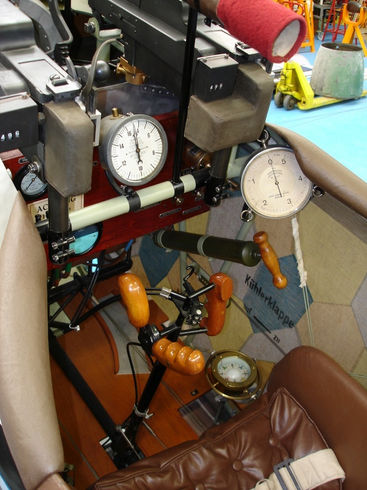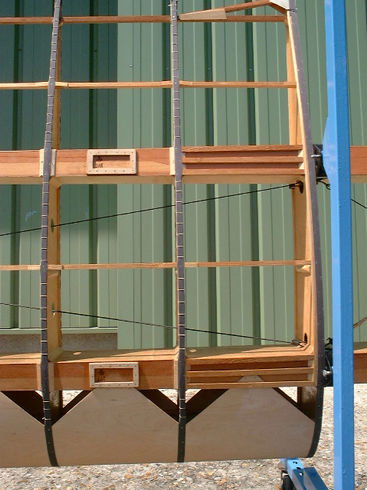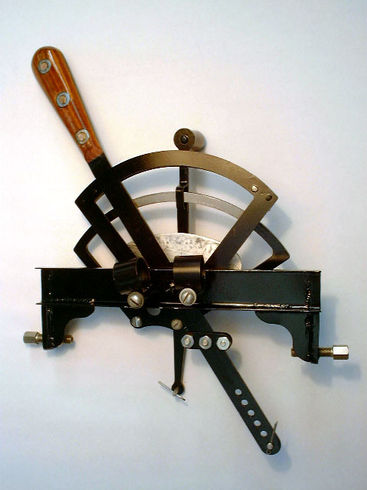

Many consider the German Fokker D.VII to be the best fighter aircraft of the First World War.
During the latter half of 1917, the Allies had regained air superiority over the Western Front with the S.E.5 and the SPAD fighters. To counter this, the German government invited aircraft manufacturers to submit prototype single-seat fighter designs for evaluation at a competition to be held at Adlershof airfield in Berlin in January 1918.
The selected one (on 31) was the in-line-engined Fokker V.11, which became the Fokker D.VII as a production airplane. The V.11 was largely the creation of Fokker's chief designer, Reinhold Platz and was completed just before the Adlershof competition began on January 21, 1918, so Fokker had little time to test it beforehand.
Fokker received a production order for 400 Fokker D.VIIs. Concerned that the Fokker factory would be unable to meet the demand for the new fighter, IdFlieg (Inspektion der fliegertruppen) directed Albatros (Fokker's great rival) to produce D.VIIs under license. The Johannisthal-built aircraft carried the designation Fokker D.VII (Alb) and those constructed at Schneidemühl were identified Fokker D.VII (O.A.W.).
Fokker D.VIIs began to reach front line units in April 1918. Initially, the D.VII was powered by a 160-horsepower Mercedes D.III engine. By the summer, however, the Mercedes-powered D.VII was already having difficulty keeping pace with the latest Allied fighters. The airplane was then experimentally fitted with the new 185-horsepower B.M.W. IIIa, which dramatically improved performance. Unfortunately, only limited quantities of B.M.W. IIIa were available. The B.M.W.-powered model, known as the D.VIIF, was much sought after by the German pilots, but could only be supplied in small numbers. A lot of Fokker D.VIIs were also fitted with the 180 hp Mercedes D.IIIa and 200 hp D.IIIaü engines.
When the Fokker D.VII appeared on the Western Front, Allied pilots at first underestimated the new fighter because it lacked the sleek, graceful lines of the German Albatros fighters. But they soon revised their view, despite the comparatively ungainly appearance of the D.VII. One reason for this was the soon-to-be-famous ability of the Fokker D.VII to seemingly "hang on its propeller," and fire into the unprotected underside of Allied two-seater reconnaissance aircrafts. The Fokker D.VII's thick wing section endowed the airplane with good stall characteristics. Positioning below and behind a two-seater, where the enemy observer could not bring his guns to bear, a D.VII pilot could safely put his airplane into a nose-high attitude, with full power, in a nearly stalled condition. The capability of the D.VII to perform this maneuver made it a highly feared opponent in combat.
Fokker D.VII F Reproduction

This project is based on a number of original drawings and documents, in particular the complete study of Fokker N°2009 published in November 1918 by the STAé (pictures, drawings, tests, etc...), the examination by Boeing in 1919 of N°7806 and mainly on the research work done during the restauration of Fokker N°6796 /18 (Musée de l'Air et de l'Espace).
A great care was taken to build this aircraft according to the original specifications. The engine, as well as the equipment, is original.
This aircraft flies with an original 185 hp BMW IIIa engine. To our knowledge, this is the only working engine of this type, and the oldest BMW engine to fly today.
Our aircraft is finished as per the specifications of a Fokker D.VII F, and thus is equipped with a mock-up replica of a breathable oxygen supply unit. It bears the number 4400/18 and is painted as a Jasta 4 aircraft. The distinctive markings of German ace Ernst Uder are painted on the airplane. He used to paint "Lo!" on the sides of each of his personal aircrafts. This was the nickname of his fiancée, and soon-to-be wife, Lola Zink.



Building the Fokker D.VII
Photoscopes
Photoscope
General view of the Fokker D.VII F.
Note: the upper wing is striped Fokker green and white.
Photoscope
The Cockpit.
Photoscope
Top wing before fabric covering.
Photoscope
Oil tank.
Note : The oil tank is placed to the right side of the engine on late Fokker D.VII models. This change was made after finding out, among other things, that the warm oil was creating condensation in the emergency fuel tank.
Photoscope
Bottom wing complete.
Photoscope
Bottom wing before fabric covering.
Photoscope
Control column and throttle.
Note: The control stick comes with two throttle handles as found on Albatros and late Fokker versions ; it gives the pilot a better feel throughout the complete travel range ; it also has two separate triggers for the LMG 08/15.
This throttle is typical of the BMW engine equipped aircrafts. It uses two different handles (instead of one for the Mercedes version) ; the second handle is used to regulate the fuel admission into the carburator at high altitude.
Photoscope
Cockpit plates.
Note: Each manufacturer had its own cockpit plate layout.
Here are the different plate layouts for:
-
Fokker D.VII built by Fokker.
-
Fokker D.VII built by OAW.
-
Fokker D.VII built by Albatros.
Photoscope
Fuel Tanks.
Note: Unlike Fokker DVII's early fuel tanks which had 3 compartments (main fuel, emergency fuel and oil), late models had only 2 compartments: main fuel and emergency, both pressurized. The oil tank was moved on the right side of the engine. This change was made after finding out, among other things, that the warm oil was creating condensation in the emergency fuel tank.
A slight improvement compared to the original is the fact that we applied a coating on our tank.
Photoscope
Ammunition box.
Photoscope
Empty ammunition belts box.
Photoscope
Pilot' seat.
Note: Made out of 1mm aluminium sheet except the bottom made out of plywood, it is covered in fabric, coated with brown pigmented non shrinking dope, filled with vegetal fiber. An aluminium fitting prevents the cushion from sliding.
Note how the fabric is laced to the seat, which is quite different from the "usual" way found in modern drawings or representations. The seat belt whose lower attachment also differs a from common representation and the height adjustment turnbuckle.
The seat is attached to its mount with rivets: 6 in the back and 1 on each side.
Photo Album
Videos

BMW engine test, September 2006 (1min40s)

First start of the BMW. July 2006 (1min38s)
Fokker D.VII first flight: Take off, patrol, landing. May 2007 (3min)
2007 La Ferté-Alais airshow evening training: Take off, patrol, landing. June 2007 (2min45s)
Evening flight: S.E.5a and Fokker D.VII in formation : Take off, flypast, patrol. May 2009 (2min52s)
Fokker DVII, June 2011: Training flight prior to the 2011 La Ferté- Alais airshow (3min37s)
SPAD XIII chasing the Fokker D.VII, 2014 La Ferté-Alais airshow training flight : Take off, poursuit. June 2014 (4min50s)
Friend or Foe - SPAD XIII & Fokker D.VII, 2014 La Ferté-Alais airshow training flight : Take off, poursuit. June 2014 (4min15s)
Specifications
Length: 8.40 m
Wingspan: 8.90 m
Weight: 880 kg
Engine: 1x 160 hp Mercedes D-III / 180 hp Mercedes D.IIIa / 200 hp Mercedes D.IIIaü / 185 hp BMW IIIa
Speed: 200 km/h
Endurance: 1 h 30
Crew: 1
Armament: 2x 7.92mm LMG 08/15 "Spandau" machine guns -1000 rounds
Pressbook
Article: Fokker D.VII survivor / Classic wings (English), 1 page




























































































































